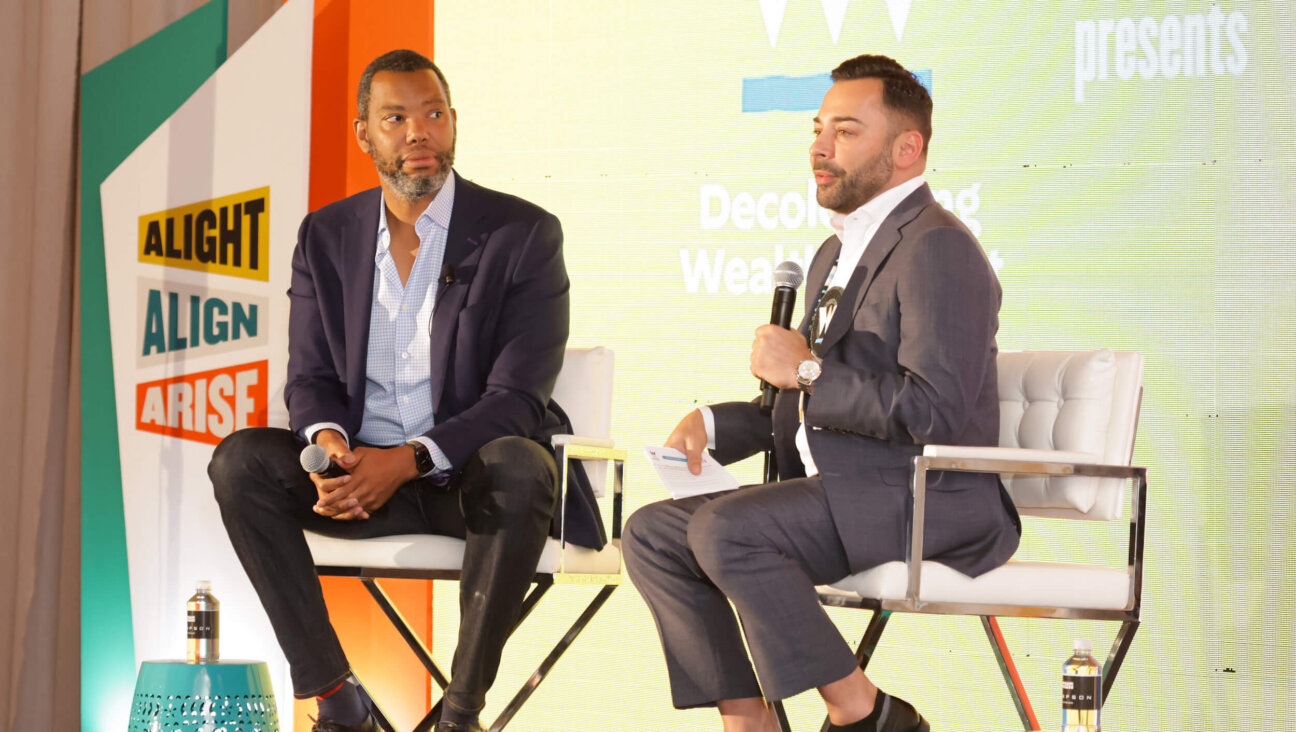Should He Stay or Should He Go? Neither — Bernie Sanders Has a Third Path

Image by Getty Images
Bernie Sanders stands at a historic crossroads in his presidential campaign. One path is a continued fight against Hillary Clinton until every last delegate is chosen. The other path is to quit the race and start rallying his troops behind the winner.
Each is a legitimate option with its own pluses and minuses. You can see how the decision is tearing him apart. It’s transforming him before our very eyes from a cranky but lovable grandpa into Mean Old Mr. Wilson, next-door neighbor of Dennis the Menace.
Watching him sputter and snarl during the April 25 MSNBC town hall in Philadelphia, insisting he would support Clinton only if she adopted his entire socialist platform, should have saddened even his most adoring fans. What’s scary is that it probably gladdened all too many of them. It certainly delighted Donald Trump.
To fully understand Sanders’s dilemma as he approaches the next phase, it’s helpful to observe how he’s broadened the meaning of his signature issue, the danger of the 1%. Up to now it’s been a reference to the wealthy few who dominate our economic and political lives. Lately it’s taken on another meaning: his odds of winning the nomination.
Between staying and quitting, though, there’s a third path Sanders could choose. He could continue his campaign up to the convention, but not as a grudge match against Clinton. Instead, he could use the last phase of his presidential campaign to drive home his ideas. Up to now he’s opened the door, but he has yet to drive through it.
At its best, there’s no bully pulpit in American public life that compares to a presidential campaign as a vehicle for spreading an idea. Sanders has used it to spectacular effect. He’s put a social-democratic vision of economic justice at the very center of the American debate. He’s attracted a huge audience that’s ready to follow him to the end. At the same time, he’s built an even larger audience that gets his ideas, even sympathizes with them, but doesn’t think they’re doable.
He has one last chance to crack that final nut. It demands that he stay in the race. But it needs to be a different sort of race. If he chooses correctly, he can ensure that there’s a thoughtful, capable Democrat in the White House in 2017 who will have his agenda on her to-do list. And he’ll ensure that he retains some serious influence within her administration. If he chooses incorrectly, he’ll become a historical footnote.
Most of the Sanders campaign so far has consisted of cataloging the economic ills of America’s working families, railing against the billionaires and Wall Street bankers whom he blames for all the troubles, and offering a few fixes to ease the working folks’ distress. His solutions are mostly hideously expensive: free tuition at public universities, universal health care through Medicare for all, paid family leave. Others are vague and gauzy: fixing the criminal justice system, rebalancing our trade policies, reducing the prison population.
When he’s asked how we’ll pay for all this, he names a few tax hikes, mostly on Wall Street and the billionaires, plus a middle-class tax hike to pay for health care. The parts that don’t sound impossible — like squeezing enough money out of a few billionaires to pay for millions of college students — just sound scary. Like raising taxes on middle-class families, most of whom already have health insurance.
And how will he get all this through a Congress that won’t even confirm a centrist Supreme Court nominee? Why, he’ll spark a “political revolution.” He’ll mobilize millions of disaffected non-voters into the political system to demand their rights. The non-voters who didn’t show up to win him the delegates he needed, not even in super-liberal New York or next-door Massachusetts. Yes, those non-voters.
Mind you, there’s one part of the equation that he’s gotten absolutely right, but failed to drive home: America is the only industrialized nation that doesn’t offer the sorts of middle-class benefits he’s advocating. That these things are not impossible in a 21st-century economy. They’re not even hard.
He hasn’t explained that those other countries built their generous social welfare systems on a foundation of economic building blocks that emerged from World War II. That America had the same foundation. But while the rest of the world was expanding their welfare, tax and regulatory systems to control runaway inequality and meet the needs of working families in the late 20th century, we in America were dismantling ours.
We did it by eliminating tax incentives and regulations that restrained corporate profits and executive salaries, rather than updating them to address changing technologies. We did it by decimating the organized labor movement, reducing it from one-third of the workforce during the high-growth Eisenhower years in the 1950s to barely one-tenth today. We did it by steadily decreasing subsidies and raising tuitions at public universities. We did it in the bluntest way possible by freezing the minimum wage and hammering welfare assistance to the poorest.
Perhaps worst of all, we lowered the top marginal tax rate on the highest incomes from 70% under presidents Kennedy, Johnson and Nixon — and 90% under Eisenhower — to the Reagan-Bush-Clinton era maximum that’s fluctuated between 28% and 39%. And we’ve made up part of the shortfall by tripling the payroll tax on the middle class.
It’s true, as conservatives argue, that there’s been an explosion in the share of the federal budget going to entitlement benefits — mostly to Social Security and Medicare for the elderly. That’s mainly because people are living longer. Conservatives want to fix the imbalance by reducing the benefits, or shifting the burden to the individuals rather than the taxpayer. If that’s the goal, you’d think they’d be pushing hard for higher pay for the working poor, so that wage earners have something left to save after paying for food and rent. After all, the current plan of the entitlement hawks is to throw the elderly into the streets. That can’t be what the American public wants.
None of these issues is impossible to fix. They require political will. And that requires an informed public. Sanders now has an incomparable opportunity to spend the next half-year informing us of how it all works. May he choose wisely.
Contact J.J. Goldberg at [email protected] or follow him on Twitter @JJ_Goldberg
A message from our CEO & publisher Rachel Fishman Feddersen

I hope you appreciated this article. Before you go, I’d like to ask you to please support the Forward’s award-winning, nonprofit journalism during this critical time.
We’ve set a goal to raise $260,000 by December 31. That’s an ambitious goal, but one that will give us the resources we need to invest in the high quality news, opinion, analysis and cultural coverage that isn’t available anywhere else.
If you feel inspired to make an impact, now is the time to give something back. Join us as a member at your most generous level.
— Rachel Fishman Feddersen, Publisher and CEO
























